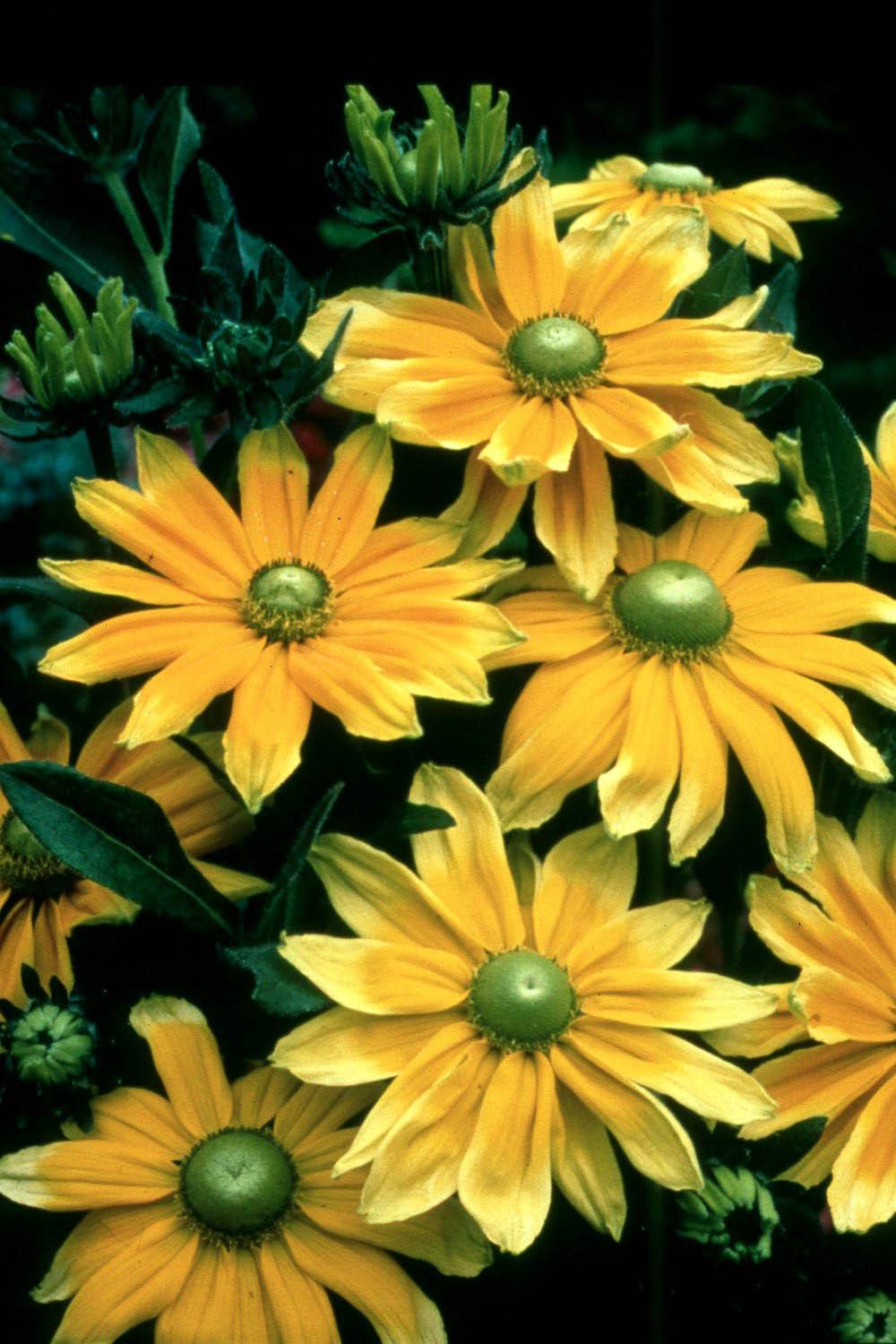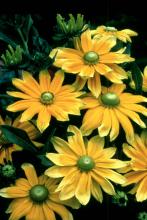Information Possibly Outdated
The information presented on this page was originally released on January 27, 2003. It may not be outdated, but please search our site for more current information. If you plan to quote or reference this information in a publication, please check with the Extension specialist or author before proceeding.
Prairie Sun shines in any landscape
By Norman Winter
MSU Horticulturist
Central Mississippi Research & Extension Center
The winter already seems long, and if you are like me, we're ready to dig in the dirt. These next weeks before Spring offer great opportunities to plan for our beds to be the showiest ever. One plant you should consider is a new Rudbeckia hirta, or black-eyed susan, known as Prairie Sun.
Prairie Sun is an All-America Selections winner this year, and I never saw it less than picturesque in variety trials, even in mid-August. It is one of those flowers that might be considered a gloriosa daisy. These are normally treated as annuals, although they do return occasionally.
Those of you who loved the Mississippi Medallion award winning Indian Summer with the large softball-sized flowers will find this one equally enchanting. There are a couple of big differences, however. Indian Summer has a brown or black eye, and Prairie Sun has a green eye. Indian Summer is a deep yellow gold, and Prairies Sun features the deep yellow gold with a primrose band around the petals' tips.
Like Indian Summer, Prairie Sun will be a large plant reaching from 24 to 36 inches in height and probably will be the most attractive flower in the landscape during its long period of bloom.
Prairie Sun will perform with breathtaking beauty if planted in fertile, well-drained soil in full sun. Amend tight soil with 3 to 4 inches of organic matter, and till to a depth of 6 to 8 inches, adding two pounds of a slow-release fertilizer per 100 square feet of bed space. A 12-6-6 or balanced 8-8-8 blend with minor nutrients included are good choices. Space 18 to 24 inches apart, planting at the same depth they are growing in the container.
This is a plant that can be grown from seed but usually the seeds of first year All America Selections winners are hard to find. Apply a layer of mulch after planting or when seedlings are 6 to 8 inches tall.
Deadhead spent flower stalks to keep the plant tidy, to increase production and to eliminate a potential site for disease. Keep well watered and fed with frequent light applications of fertilizer. Although considered an annual or biennial, it will often re-seed if some seeds are left toward the end of the season. The resulting seedlings will most likely not be true to type, but will be none-the-less attractive.
Don't let the thought of this being an annual disturb you. Its beauty is as though it was created for the perennial border. The large, softball-sized flowers look even better when combined with spiky blue or violet flowers from salvias, angelonias or veronicas like Sunny Border Blue. Saturated red flowers from zinnias or annual salvias also combine well.
Prairie Sun like Indian Summer produces 5- to 9-inch flowers on 18-inch stems, are ideally suited as cut flowers and have a long vase life if you condition them. The secret is to place a cardboard sheet on top of a deep pan of 100 to 110 degree water.
Cut holes in the cardboard to allow the stems to be placed through and into the water. When the petals are flat and the stem is straight, it is ready for the vase.
Hopefully, you will plan to use Prairie Sun in your landscape. I know you will love it. One other thing: this would be a good time to remind your garden center to make sure they have plenty on hand for spring planting.



